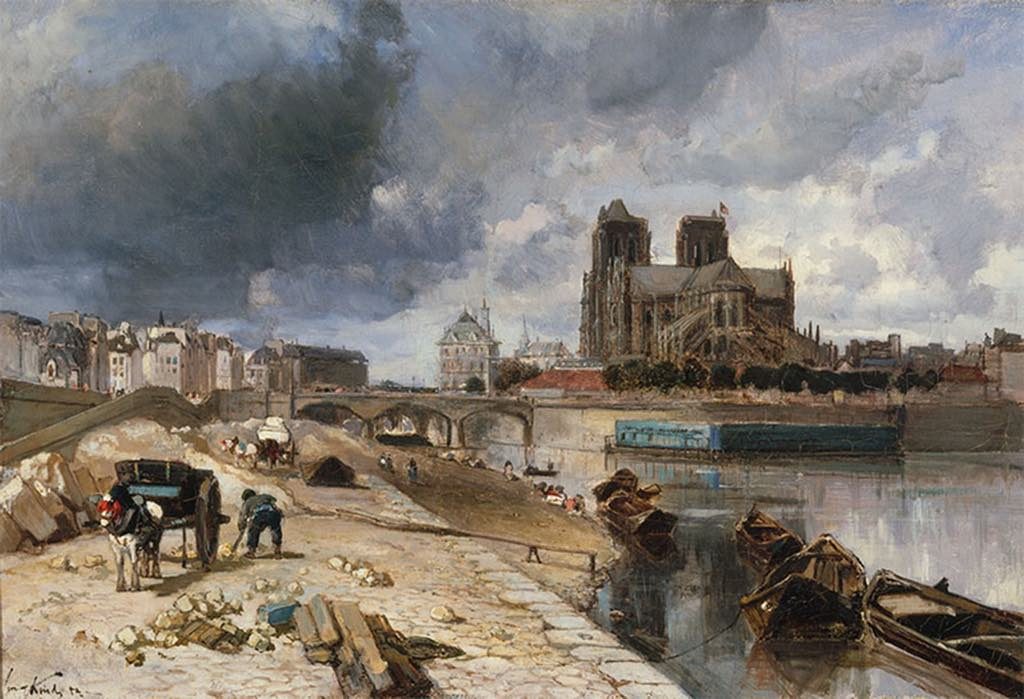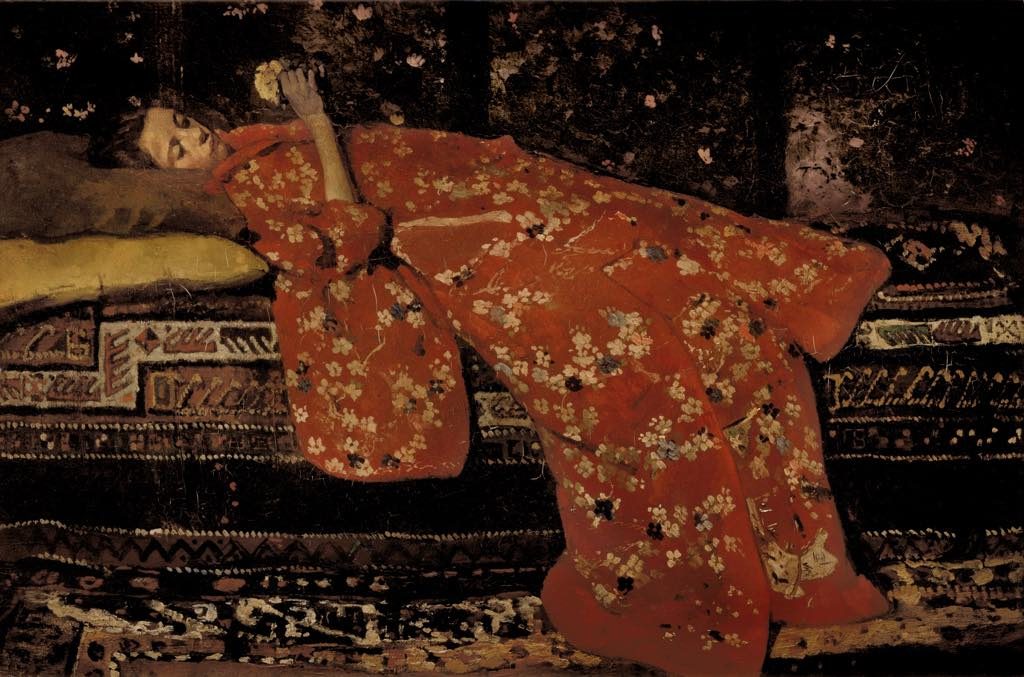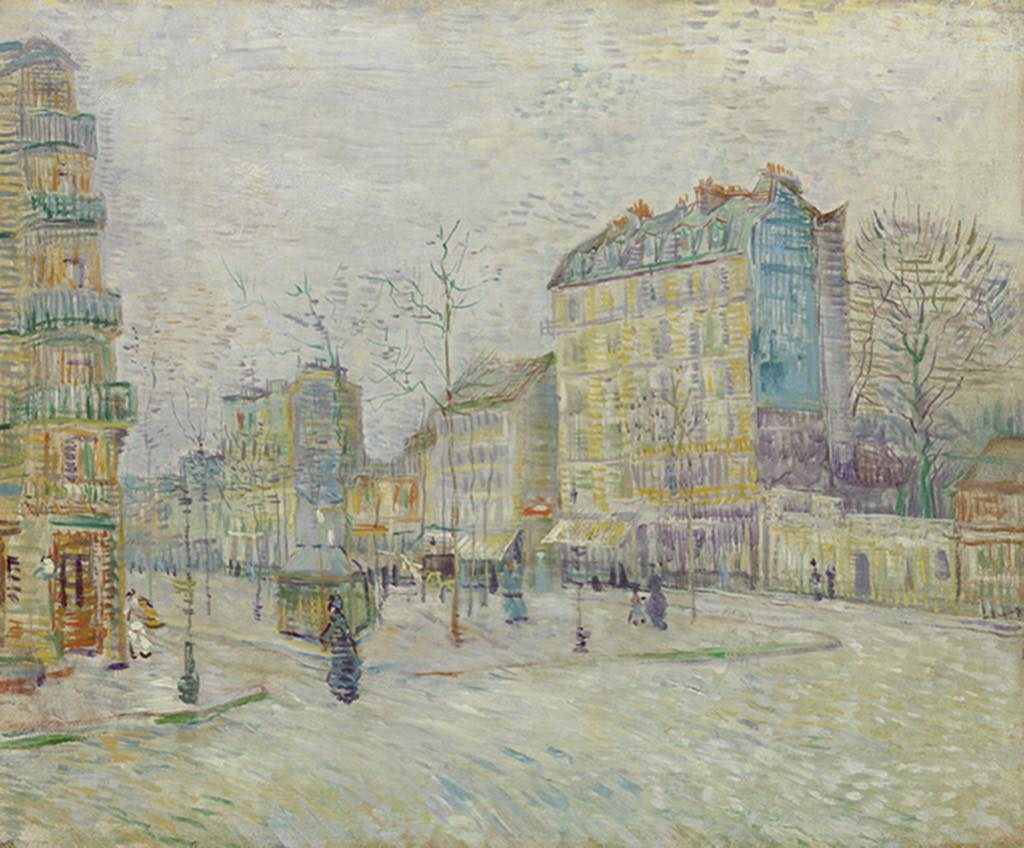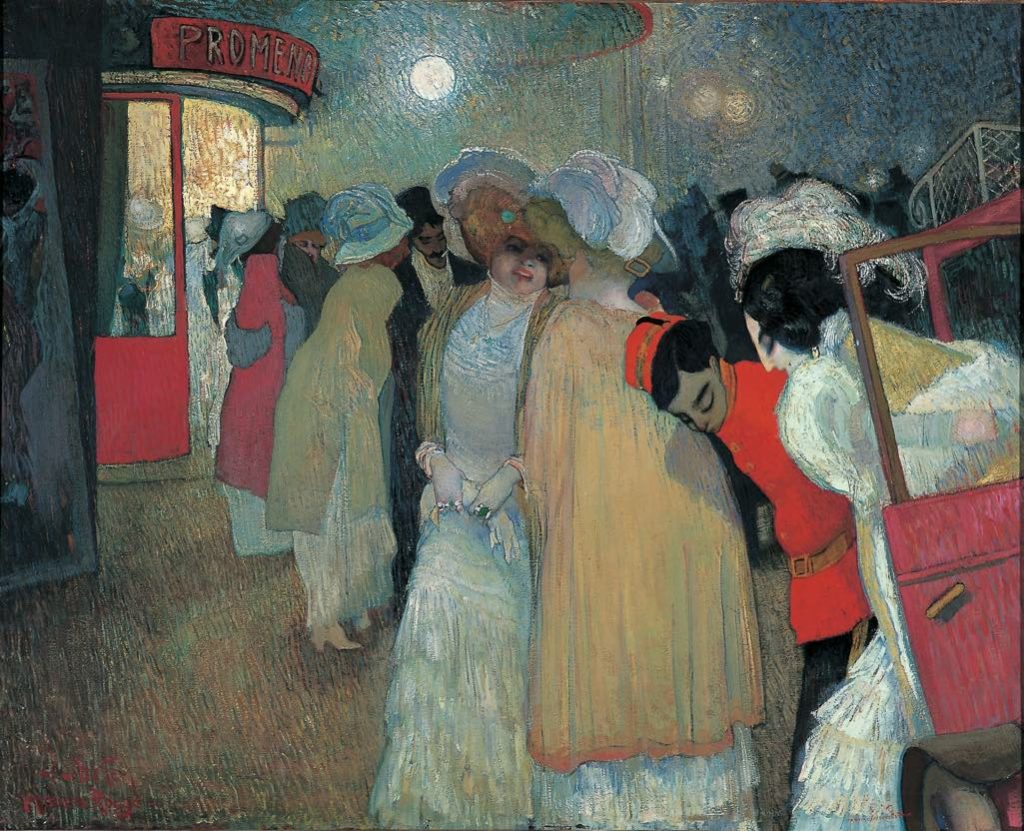Although we don’t hear much about them, there was still life left in Dutch artists long after the waning of the Golden Age and the disappearance of the Old Masters. I saw evidence of that in the exhibition “Dutch Modernity: The Singer Collection,” several years ago at the Musée d’Art Moderne in Troyes, and now the Petit Palais is staging an original and enjoyable exhibition on the activities of Dutch artists in Paris between the French Revolution and the beginning of World War II: “Les Hollandais à Paris, 1789-1914.”
During that time, when the French art market was booming, over a thousand Dutch artists traveled to Paris. Many stayed for varying periods of time and some settled down. This exhibition, arranged chronologically, spotlights one Dutch artist for each major art movement and compares their work to that of their French contemporaries.

The show starts with pretty Paris-scapes and lush floral compositions that are very much in the Dutch tradition, centered around the work of Gérard van Spaendonck, and then moves quickly on to the Romantic period, focusing on Ary Scheffer, an artist whose name is familiar to us today mainly because he owned the house and studios that make up the Musée de la Vie Romantique in Paris, a sort of monument to the period and to his friends George Sand and Frédéric Chopin. Scheffer was also a friend of Théodore Géricault and Eugène Delacroix, who influenced his often histrionic work.
In the next room, we have the pleasure of seeing Impressionism in the making through a number of paintings by Johan Barthold Jongkind (1819-91), a master at capturing effects of light on the Seine or the ocean in Normandy. The drama in his paintings comes from nature and its stormy skies, not from overwrought humans as in Scheffer’s work.
A number of less-familiar artists are included in the show, among them the talented Hague School landscape painter Jacob Maris, who was strongly influenced by the Barbizon School painters when he lived in France, but for me the most interesting discovery was the work of George Hendrik Breitner (1857-1923). He is described as an Impressionist, but most of the powerful paintings here are of figures painted indoors and all have dark, moody palettes. In “À Bord” (1897), three women sit on a boat wearing voluminous white skirts and big white hats, which they hold on with their hands to prevent them from blowing away in the wind. Their faces are featureless. What might have been a whimsical subject is turned into something menacing by the figure of a man in a long dark coat looming in front of them. Breitner’s monumental painting “Le Cheval de Montmartre” (1884), a striking night scene featuring a dejected-looking horse, has a similarly sinister atmosphere, while the striking “Le Kimono Rouge” (1893; pictured above), is a symphony of patterns suffused with melancholy.
A roomful of Van Goghs consists mainly of paintings made when the artist lived in Montmartre in 1886 and ’87, when he hadn’t yet become the painter we know best today (they suffer by comparison to a gorgeous Monet painting of the Tuileries in 1876).
The next room, supposedly featuring Kees Van Dongen, is lined with delightful, brilliantly colored paintings of festivities and dance halls by Van Dongen and various other painters, including Picasso.
Things get more austere in the Mondrian room, where we get a good illustration of the artist’s transformation from Cézanne follower to a follower of Cubism to his own, very minimal style. A painting by Cézanne, “Les Grands Arbres” (1902-04), hangs in this room, so gorgeous that I desperately wanted to pluck it off the wall and take it home with me.
All in all, this is another delightful show at the Petit Palais, a kind of history of the art movements of the period covered, studded with a number of superlative paintings.
Favorite





Breitner’s “À Bord” and the van Dongen room make the exhibition worth seeing, but even without these two, it would be worthwhile.
Sounds like a marvelous show — AND a great IDEA for a show. – Susan Stamberg